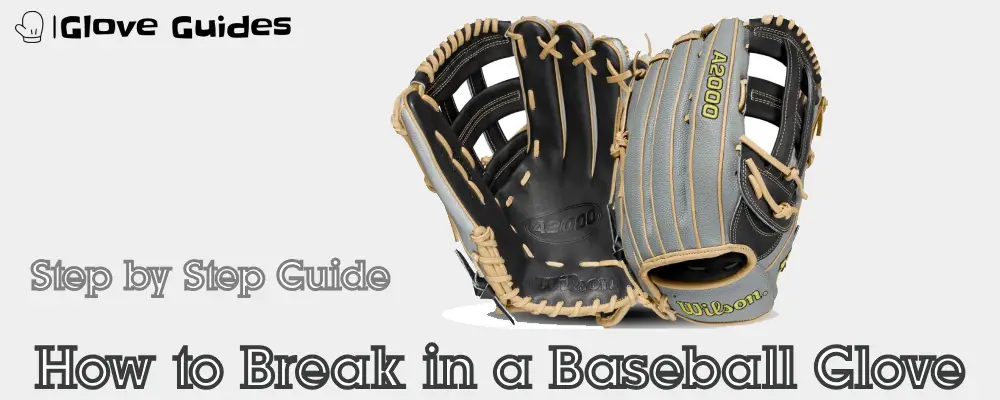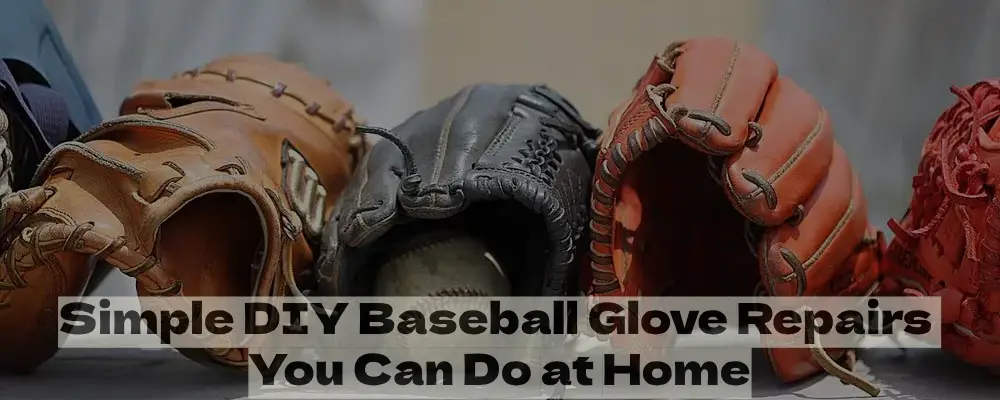Have you ever wondered if the type of web in a baseball glove really makes a difference? Derek Jeter and Nolan Arenado, two baseball legends, using completely different web types. But here’s the real question about the baseball glove webs: does it actually impact how they play? In this post, We’ll explore whether the kind of web in your glove can change the game or if it’s just a matter of personal preference. Get ready to know the secrets behind these webs and find out if they’re more than just strings on leather.
Remember, it’s all about the game, and every little detail counts. Now, let’s get to the nitty-gritty of baseball glove webs.
The Different Web Types:
Do Baseball Glove Webs Even Matter?
I. Open Webs:
- Characteristics: Open webs, like the I-web and H-web, feature a design with fewer leather pieces, allowing for increased visibility through the glove.
Benefits:
- Enhanced catching ability: The open design reduces wind resistance, making it easier to catch fly balls.
- Versatility: Open webs are favored by players who need to quickly transfer the ball, such as infielders.
II. Closed Webs:
- Characteristics: Closed webs, such as the basket web and two-piece web, have more leather pieces, providing additional support and structure to the glove.
Benefits:
- Fast transfers: The tight weave of closed webs enables quick ball transfers, ideal for infielders making rapid plays.
- Grip: The closed design offers a secure grip on the ball, preventing it from slipping out during catches.
III. Specialized Webs:
- Characteristics: Specialized webs, like single-post or trapper webs, deviate from traditional designs to cater to specific player preferences or playing styles.
- Unique Applications: These webs may offer features such as deeper pockets or increased stiffness, catering to players seeking specialized performance benefits.
Webs for the Infield:
i. The I-Web:
- Characteristics: The classic V-shaped web with a shallow pocket.
- Benefits: Ideal for shortstops and second basemen needing quick transfers on infield plays.
ii. The One-Piece Web:
- Characteristics: Similar to the I-web but with more leather, offering a slightly deeper pocket.
- Benefits: Provides a satisfying “smack” when catching and a bit more depth for secure ball retention.
iii. The Modified V-Web:
- Characteristics: A variation of the I-web with a similar performance but a different aesthetic.
- Benefits: Offers the same quick transfer capabilities with a unique look.
iv. The Trapeze/Modified Trap:
Do Baseball Glove Webs Even Matter?
- Characteristics: Features numerous laces for stiffness and sturdiness.
- Benefits: Ideal for handling hard-hit balls, popular among third basemen and outfielders.
v. The Single-Post Web:
- Characteristics: Versatile web with a deep pocket, often used at third base and in the outfield.
- Benefits: Allows for easy scooping of grounders and secure ball retention.
vi. The Hinged Post:
Do Baseball Glove Webs Even Matter?
- Characteristics: Unique web with a hinge in the middle.
- Benefits: Offers a deep pocket and distinctive appearance, favored by players seeking both performance and style.
Beyond the Infield:
i. The Basket Web:
- Characteristics: Fully closed web concealing the pitcher’s grip.
- Benefits: Popular among pitchers for concealing grip and providing a solid feel.
ii. The H-Web:
- Characteristics: Durable and versatile web design.
- Benefits: Offers longevity and flexibility, suitable for various positions on the field.
Outfield Webs:
i. The H-Web:
- Characteristics: Large surface area for catching fly balls.
- Benefits: Ideal for outfielders needing to cover ground and make diving catches.
ii. The Trapeze and Six-Finger Webs:
- Characteristics: Open webs allowing for quick transitions.
- Benefits: Perfect for outfielders chasing down balls, offering agility and speed.
Web vs. Shape:
- While webs indicate glove intended positions, the shape is crucial for player-specific needs.
- Prioritize finding a glove shape that suits your position and playing style for optimal performance.
Customizing Your Web:
- The beauty of custom gloves lies in choosing your web.
- Select a web that resonates with your personality and preferences, ensuring comfort and confidence on the field.
Web Choice and Playing Position:
Infielders:
i. Middle Infielders:
Web types like the I-web and modified V-web are preferred for their ability to facilitate rapid ball transfers, crucial for turning double plays and fielding grounders in the middle infield.
ii. Corner Infielders:
Infielders stationed at first and third base often opt for webs with deeper pockets like the single-post web, allowing them to securely scoop up ground balls and make accurate throws to bases.
Outfielders:
i. Fly Ball Coverage:
Outfielders typically favor larger webs such as the H-web or trapeze web, providing a bigger surface area to catch fly balls and track down deep hits.
ii. Securing Throws:
Webs with deeper pockets, like the H-web or basket web, assist outfielders in securing throws from the outfield and making strong, accurate throws to infielders or home plate.
Pitchers:
i. Grip Concealment:
Pitchers often prefer closed webs such as the basket web or closed two-piece web to conceal their grip on the ball, preventing batters from predicting pitch types based on grip variations.
ii. Ball Control:
Pitchers may opt for webs with added stability and control, like the H-web or closed two-piece web, to enhance their ability to grip and control the ball during pitches, improving accuracy and consistency.
Beyond Webs Other Factors to Consider:
Personal Preference:
When choosing a web for gloves, personal preference matters. What feels comfortable and familiar to you can significantly impact your performance on the field. Take the time to try different web types and find the one that suits your playing style and feels just right.
Glove Size and Material:
- Size Matters: The size of your glove matters as much as the web type. Infielders may prefer smaller gloves for quick plays, while outfielders often opt for larger gloves to cover more ground. Consider your position and playing needs when selecting the size.
- Material Influence: Whether it’s classic leather or modern synthetics, the material affects how a web performs. Leather provides durability and a traditional feel, while synthetics offer lighter options. Think about your preferences and the demands of your position when deciding on material.
Break-in and Maintenance:
- Proper Break-in: Your glove needs time to break in and mold to your hand. Properly breaking in your glove ensures flexibility and comfort. Work on catching and closing the glove to help it form to your playing style.
- Regular Maintenance: Just like any piece of equipment, your glove requires maintenance. Keep it clean, check for any wear and tear, and treat it with the right conditioning products. Regular care ensures that your glove, including the web, stays in top-notch condition for every game.
Final Verdict
The debate on varieties of baseball glove webs over their importance lingers. From the versatile I-web to the secure H-web, we’ve explored the nuances that cater to different playing positions. While web types matter, personal comfort and preference emerge as paramount. Remember, the perfect glove is not solely defined by its web but by how it aligns with your unique playing style. As you embark on your glove selection journey, consider size, material, and maintenance. Prioritize comfort, find your perfect fit, and let your glove become an extension of your game. In the end, it’s not just about the web it’s about the player behind it.
FAQs:
Do pitchers also use the I Web gloves?
A glove with a basket webbed will be totally sealed off, preventing any dirt or light from getting through. This glove can also be referred to as a totally closed web. Pitchers frequently use this web because it hides their grip from hitters who might be watching.
What type of webs do outfielders use?
Baseball gloves come with a variety of web patterns, such as trapeze webs, basket webs, T-webs, I-webs, and H-webs. Because of the way they are shaped, H-webs are called after the letter “H.” Because these webs offer a greater catching surface and improved visibility, they are perfect for outfield players.
What is a single post-web baseball glove?
Single Post Web: First base is where single post webs are primarily utilized. The single post web is made of flexible and visible leather strips woven together in both horizontal and vertical directions. Double Post Web: Mostly employed as a pitcher’s glove, the double post web is also occasionally utilized in the infield.


